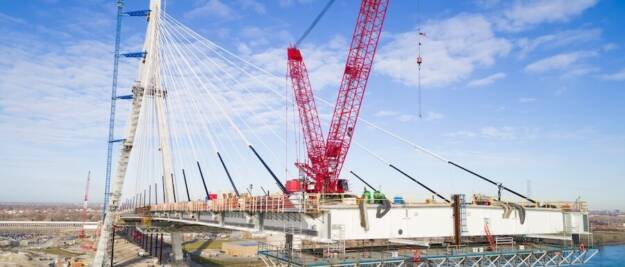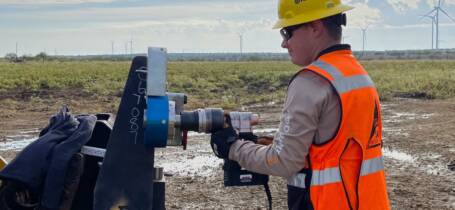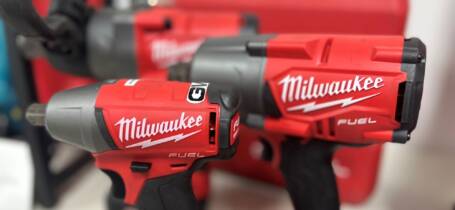
Bridge construction is among the most hazardous jobs in the construction industry, with workers facing significant risks from heights, heavy machinery and live traffic.
In 2021, the highway, street and bridge construction sector recorded 52 fatalities, and nearly three out of every 100 workers suffered a nonfatal injury — a rate higher than the construction industry average of 2.4 occupational injuries and considerably more than in some other sectors like oil and gas pipeline construction.
Worker protection in bridge construction is non-negotiable. Continue reading to learn how to safeguard your crew and ensure your worksite meets the highest standards.
The Dangers of Bridge Construction
Bridge construction poses significant hazards that require rigorous safety measures. The risks inherent to this type of work can lead to severe injuries or fatalities if worksites are not properly managed. Here’s a look at some of the most dangerous aspects of this type of work:
- Falls from Heights
Working at significant heights increases the risk of severe injuries. Proper fall protection systems, including harnesses and guardrails, are critical. Regular safety checks and training on the correct use of fall protection equipment can significantly reduce these risks. - Heavy Machinery Hazards
Handling heavy machinery in tight spaces or over water can lead to accidents if equipment fails or is improperly used. A stark example is the 2016 crane collapse on the Tappan Zee Bridge, where a Manitowoc MLC300 crawler crane, engaged in driving piles with a vibratory hammer, collapsed. The 256-foot-long boom of the crane fell across the existing Tappan Zee Bridge, spanning both the north and southbound lanes of Interstate I-87/I-287. Remarkably, there were no fatalities or serious injuries, as traffic was halted just before the crane fell. This incident highlights the critical importance of careful equipment selection, rigorous maintenance and thorough operator training to prevent such catastrophic failures. - Live Traffic Risks
Workers on bridge construction sites are particularly vulnerable to traffic-related accidents. In 2021, 63% of highway worker fatalities were due to vehicles striking workers, up from 35% in 2015. Implementing Positive Protection and barrier systems can drastically reduce these incidents, providing a physical buffer between workers and moving vehicles. - Weather Conditions
Unpredictable weather, such as high winds or sudden storms, can create hazardous conditions. Construction schedules should be flexible enough to accommodate weather delays, and workers should be equipped with the knowledge and tools to secure the site against these risks.
Ensuring Worker Safety on the Job Site
Maintaining a safe bridge construction site requires constant vigilance and proactive measures. A well-executed safety plan is essential for protecting workers from the inherent risks of the job. This includes:
- Safety Training and Briefings
Every worker on a bridge construction site should receive thorough safety training, covering the specific risks of the job — working at heights, handling heavy machinery and operating near live traffic. Regular refresher courses and daily toolbox talks ensure that safety protocols remain at the forefront of workers’ minds. These briefings provide a platform to address potential hazards, review procedures and reinforce vigilance. - Personal Protective Equipment (PPE)
The proper use of PPE is non-negotiable. Hard hats, harnesses, high-visibility clothing and other protective gear must be worn at all times. Ensuring that PPE is well-maintained and correctly used can be the difference between a minor incident and a serious injury. - Monitoring Worker Health
Fatigue, stress and other health-related factors can significantly impact worker safety. Given that highway maintenance workers are 3.7 times more likely to die on the job than the average American worker, implementing a system to monitor worker health, such as regular check-ins or scheduled breaks, is crucial to preventing accidents caused by exhaustion or inattention. - Reliable Communication Protocols
Effective communication is crucial for maintaining safety on a busy construction site. Establishing clear communication protocols, such as designated radio channels or hand signals, ensures everyone is on the same page and can respond quickly in an emergency. - Identifying and Mitigating Hazards
Regular site inspections and hazard assessments are critical for identifying potential risks before they become serious problems. The 2015 Cincinnati I-75 Bridge collapse, caused by structural instability during demolition, demonstrates the dire consequences of neglecting hazard identification. Addressing such issues promptly can prevent accidents and keep workers safe.
Essential Equipment for a Safe Bridge Construction Site
The right equipment is crucial in maintaining a safe bridge construction site. Proper tools not only improve efficiency, but also significantly reduce the risk of accidents. Here are a few equipment-related considerations that improve bridge construction worker well-being:
- Safety Gear
As we touched on above, every worker should be equipped with essential safety gear, including hard hats, harnesses, gloves and high-visibility clothing. This gear is the first line of defense against common job site hazards, from falling debris to exposure to dangerous materials. Consistently using and maintaining this equipment is vital for ensuring worker safety. - Electric Tools for Reduced Injury Risks
Utilizing electric tools, such as GWY’s Turn-of-Nut wrenches, can minimize the risk of injury by reducing the physical strain on workers and offering greater precision. Electric tools are particularly effective in environments like bridge construction, where accuracy and control are critical for safety. - Routine Machinery Inspections
Regular inspection and maintenance of machinery and tools are essential to prevent equipment failures that could lead to accidents. The 2016 Liberty Bridge fire, caused by a welder’s torch igniting a tarp, underscores the importance of ensuring that all equipment and materials, particularly in aging infrastructure, meet current safety standards. In this case, inadequate precautions and outdated materials nearly led to a catastrophic failure, highlighting the critical need for regular safety reviews and updates to prevent similar incidents. - Ergonomic Considerations
Tools and equipment should be designed with ergonomics in mind to minimize strain on workers and prevent repetitive motion injuries. Equipment that reduces the physical demands on workers, such as powered lifting devices or adjustable scaffolding, can significantly enhance safety on the job site.
The Importance of an Emergency Plan
Even with the best safety practices in place, emergencies can still occur on a bridge construction site. Being prepared with a well-developed emergency plan is essential for protecting your team and minimizing the impact of unexpected events. Each of the following steps are essential for emergency response:
- Developing a Comprehensive Emergency Response Plan
An effective emergency plan should address a wide range of potential scenarios, from equipment failures to natural disasters. This plan must include clear procedures for evacuations, first aid and communication during emergencies. It’s also important to regularly review and update the plan to ensure it remains relevant as the project progresses. - Conducting Regular Drills
Regular emergency drills are critical for ensuring that all workers know how to respond in an emergency. For example, simulating scenarios like the crane collapse on the Tappan Zee Bridge or the Liberty Bridge fire can prepare workers for real-life equipment failures and other emergencies. These drills not only help workers react quickly and correctly, but also identify any gaps in the emergency plan that need to be addressed. - Preparing for Common Emergency Scenarios
In bridge construction, certain emergencies are more likely to occur, such as falls, equipment failures and vehicle collisions. The increase in highway worker fatalities due to vehicle strikes underscores the need for comprehensive planning. Your emergency plan should include specific strategies for handling these incidents, including how to secure the site and provide immediate assistance to those affected. - Ensuring Clear Communication During Emergencies
Effective communication is crucial during an emergency. Establish clear communication protocols, such as designated radio channels or emergency contact lists, to ensure that information can be quickly and accurately relayed to all team members. This ensures a coordinated response and helps prevent further accidents. - Providing Emergency Equipment and First Aid Supplies
Emergency equipment, such as fire extinguishers, first aid kits and rescue tools, should be easily accessible and regularly inspected to ensure they are in working order. Having these resources readily available can make a significant difference in the outcome of an emergency situation.
Bridge Construction Safety Checklist
To help streamline safety management on your bridge construction site, we’ve developed a comprehensive checklist covering all critical aspects of worker protection and site safety. This tool is designed to assist supervisors and site managers in maintaining a safe environment and ensuring compliance with safety regulations.
General Safety Checks
- Confirm that the emergency response plan is up-to-date and accessible to all workers.
- Conduct daily safety briefings to address potential hazards and reinforce safety protocols.
- Ensure that all workers have received proper safety training and are equipped with necessary PPE.
Machine and Tool Safety
- Inspect cranes, lifts, chains, lanyards and ladders daily for signs of wear and tear.
- Verify that all electric tools, including GWY’s Turn-of-Nut wrenches, are functioning properly and have been maintained according to manufacturer guidelines.
- Ensure that all machinery has the required safety guards and features in place.
Hazard Identification and Management
- Assess the site for overhead and underground hazards, such as power lines or unstable structures.
- Implement traffic control measures to protect workers from live traffic, including barrier systems and Positive Protection.
- Regularly review the site for changes that could introduce new hazards, and update safety plans accordingly.
Building Safely, Building Smart
Safety in bridge construction is critical to the success and well-being of your team. By fostering a culture of vigilance and responsibility, utilizing the right tools and continually educating your workforce, you create an environment where safety is the standard.
At GWY, we’re committed to helping you keep your job sites safe and your projects on track. Explore our reliable tools and expert resources, or contact us directly for personalized advice. Together, we can protect your crew and achieve your construction project goals.



